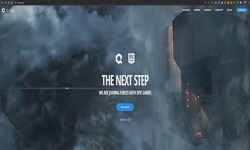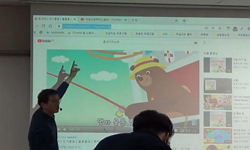M.A. Thesis The Development and Meaning of the Animal Designed Belt Hooks in the Proto-Three Kingdoms Period Park Jang-Ho Major in Archeology, Department of Cultural Anthropology Graduate School of Education, Yeungnam University (Supervised by ...
http://chineseinput.net/에서 pinyin(병음)방식으로 중국어를 변환할 수 있습니다.
변환된 중국어를 복사하여 사용하시면 됩니다.
- 中文 을 입력하시려면 zhongwen을 입력하시고 space를누르시면됩니다.
- 北京 을 입력하시려면 beijing을 입력하시고 space를 누르시면 됩니다.
原三國期 動物形帶鉤의 전개와 의미 = The Development and Meaning of the Animal Designed Belt Hooks in the Proto-Three Kingdoms Period
한글로보기https://www.riss.kr/link?id=T12581078
- 저자
-
발행사항
경산 : 영남대학교 대학원, 2011
-
학위논문사항
학위논문(석사)-- 영남대학교 대학원 : 문화인류 고고학전공 2011. 8
-
발행연도
2011
-
작성언어
한국어
- 주제어
-
발행국(도시)
경상북도
-
형태사항
; 26 cm
-
일반주기명
지도교수: 정인성
- 소장기관
-
0
상세조회 -
0
다운로드
부가정보
다국어 초록 (Multilingual Abstract)
M.A. Thesis
The Development and Meaning of the Animal Designed Belt Hooks in the Proto-Three Kingdoms Period
Park Jang-Ho
Major in Archeology, Department of Cultural Anthropology
Graduate School of Education, Yeungnam University
(Supervised by Professor In-Sung Jung)
(Abstract)
Belt hooks are a kind of hooks that look like willow leaves or Korean mandolin, and are classified according to their shape, as a curved stick type, Korean mandolin type that has a wide body, and animal type which has various inscriptions of animal shapes in the body. Belt hooks that are excavated in the southern part of Korean peninsula are tiger type belt hooks and the horse type belt hooks which are classified as animal types. Sometimes the curved stick type exists but mainly animal designed belt hooks are excavated.
The researches so far have been mainly the theses to reveal the system of the recording tiger types chronologically and the horse types excavated in Japan and on the chronological location of the collection. Seen from the aspects of being buried together, the difference between the Youngnam and Middle East provinces is confirmed, and we cannot see an example of mentioning what kind of differences there are. So in this study, we reviewed the animal designed belt hooks through the analysis of manufacturing techniques, and the aspects of burying together, and examined how they developed according to the areas.
Six types were deducted through formal type review and based on this we set up 3 steps.
If we see manufacturing, the animal designed belt hooks were manufactured with bimanual method using beeswax method, and in Yougnam province the patterns were inscribed in intaglio, and in the Middle East provinces the patterns were inscribed using embossed carving.
In terms of the aspects of burying together, in Youngnam province things were excavated only in the center of wood coffins, but in the Middle East provinces excavations were from the exterior and the top of the wood coffin showing the difference. In Youngnam provinces, single burying is usually done but in the Middle East provinces double burying is predominant. Especially, they seem to have connected several spots with one belt. Furthermore, in Youngnam province they were considered the work of creativity but in the Middle East they could hardly be seen as the work of creativity. And when we examined the relics excavated in Youngname province, we found something that cannot be seen to be the work of creativity. Seeing from the traces of the burlap bags they seemed to have been buried wrapped in the burlap bags. But as we saw the usage traces and the repair traces, the one that had actually been used in real life seem to have been wrapped in the burlap bag when being buried.
As for the development, the animal designed belt hooks that appeared in Keumho river in the first step is expanded to Kyoungju area. In the second step, they are expanded to Kimhae area and the Middle East locations. As the end of 2nd step, the animal designed belt hooks vanish in Youngnam province. In 3-1 step, the Middle East's own type appeared beyond limitation and localized. In 3-2 step, localized animal designed belt hooks began to be degraded and we can see their distribution not only in the Middle East areas but also in the Sangju area. Step 3-2 was the end, and the animal designed belt hooks disappeared in the Korean peninsula.
Summarizing the above, we confirmed the common and different characteristics of the animal designed belt hooks in Youngnam and Middle East provinces, We think that the confirmation of the difference between the two areas is the result of those locations' own localization.
국문 초록 (Abstract)
原三國期 動物形帶鉤의 전개와 의미 박장호 문화인류학과 고고학전공 지도교수 정인성 <국문초록> 帶鉤는 柳葉形 또는 琵琶形으로 생긴 일종의 고리쇠로 그 형태에 따라서 몸통과 ...
原三國期 動物形帶鉤의 전개와 의미
박장호
문화인류학과 고고학전공
지도교수 정인성
<국문초록>
帶鉤는 柳葉形 또는 琵琶形으로 생긴 일종의 고리쇠로 그 형태에 따라서 몸통과 고리가 가늘게 이어지는 曲棒形, 몸통부분이 넓어지는 琵琶形, 그리고 몸통부분에 다양한 動物裝飾이 새겨지는 動物形으로 나뉜다. 韓半島 南部에서 출토되는 帶鉤로는 動物形으로 分類되고 있는 虎形帶鉤와 馬形帶鉤가 있다. 曲棒形帶鉤도 일부 存在하기는 하지만 주로 動物形帶鉤가 出土된다.
이제까지의 연구는 호형대구에 대한 편년과 일본에서 출토된 마형대구에 대한 계통을 밝히거나 소장품의 편년적 위치에 대한 논문이 대부분이다. 그러나 부장양상을 보았을 때 영남과 중서부가 차이점이 확인되는데 이것에 대하여도 어떠한 차이점을 보이는지 언급된 사례가 잘 보이지 않는다. 그렇기 때문에 본고에서는 제작기법 분석과 형식학적 검토, 부장양상 검토를 통하여 동물형대구에 대하여 살펴보고, 지역별로 어떠한 전개를 보이는지에 대해 살펴보았다.
형식학적 검토를 통해 6개의 형식이 도출되었고, 이를 가지고 3단계로 단계설정을 하였다.
제작에 대해 보면 동물형대구는 밀랍법을 사용한 쌍합범으로 제작되었으며, 영남권에서는 문양이 음각으로 시문되었고 중서부권에서는 문양이 양각으로 시문되었다.
부장양상을 보면 영남권에서는 주로 목관중앙부에서만 출토되었지만 중서부권에서는 목관 내부뿐만 아니라 목관 외부 목관 상부에까지 출토하고 있어 차이점을 보였다. 영남권에서는 단수 부장이 주로 이루어지지만 중서부권에서는 복수 부장이 주를 이루고 있다. 특히 여러 점을 한 개의 허리띠로 연결하였던 것으로 보인다. 게다가 영남의 경우 착장품이라고 여겨져 왔는데 중서부권은 착장이라고 보기에는 어려웠다. 이에 영남권에서 출토되는 유물을 관찰해 본 결과 착장이라고 보기 어려운 점이 발견되었다. 유물에 부착된 포의 흔적으로 보아 포에 싸여져 부장된 것으로 보았다. 그러나 사용흔이나 수리 흔적이 관찰되는 것으로 보아 실생활에 사용되던 것을 부장 시에 포에 싸서 넣었던 것으로 보인다.
전개과정을 보면 1단계에 금호강유역에서 출현한 동물형대구는 경주지역까지 확산된다. 2단계가 되면 김해지역과 중서부권으로 확산된다. 2단계를 끝으로 영남권에서는 동물형대구는 소멸한다. 3-1단계가 되면 모방을 넘어서 중서부권만의 형식이 출현하며 지역화된다. 3-2단계가 되면 지역화된 동물형대구는 퇴화되기 시작하며 중서부지역만이 아니라 상주지역까지 분포하는 것을 알 수 있다. 3-2단계를 끝으로 동물형대구는 한반도에서 완전히 자취를 감추게 된다.
이상을 정리하면 영남권과 중서부권의 동물형대구는 공통점과 차이점이 확인된다. 두 지역이 차이점이 확인되는 것은 그 지역 자체적으로 지역화된 결과로 발생한 것이라고 생각한다.
목차 (Table of Contents)
- Ⅰ. 머리말 1
- 1. 선행연구 검토 1
- 2. 연구의 목적 7
- Ⅱ. 출토유적 및 분류, 편년 12
- 1. 출토 유적 12
- Ⅰ. 머리말 1
- 1. 선행연구 검토 1
- 2. 연구의 목적 7
- Ⅱ. 출토유적 및 분류, 편년 12
- 1. 출토 유적 12
- 1) 영남권 12
- 2) 중서부권 24
- 3) 기타지역 64
- 2. 분류 및 편년 67
- 1) 속성검토 67
- 2) 형식분류 70
- 3) 단계설정 72
- Ⅲ. 제작기법 및 부장양상 79
- 1. 제작기법 검토 79
- 1) 기본형의 제작방법 79
- 2) 지역별 제작기법의 차이점 84
- 2. 부장양상 검토 90
- 1) 지역권별 부장양상 90
- 2) 착장과 부장 94
- Ⅳ. 동물형대구의 전개과정 99
- 1. 동물형대구의 전개 99
- 1) 출현과 확산 99
- 2) 지역화와 쇠퇴 109
- 2. 동물형대구의 의미 114
- 1) 동물형대구의 의미 114
- 2) 일본출토 동물형대구의 의미 117
- Ⅵ. 맺음말 121












